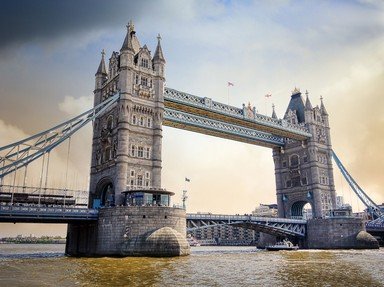Quiz Answer Key and Fun Facts
1. Which north flowing river does Newport, county town of the Isle of Wight, stand on?
2. One of the major rivers of Cornwall is the River Camel. Starting at Camelford this river heads generally north flowing into the Atlantic Ocean at Padstow. Three notable sandbars are found as the river flows through Padstow; which of these is NOT one of them?
3. The rivers Mole, Wey, Wandle, Hogsmill and Darent are north flowing tributaries of which better known river?
4. Which Kentish river flows north past a memorial which states in part, ".... when a Roman army crossed the river and defeated the British tribes under Caractacus"?
5. The River Great Ouse flows north for its last 30 miles through Norfolk into the Wash. Water is abstracted from this river with a final destination of Abberton Reservoir 90 miles to the south. In which English county is Abberton Reservoir?
6. According to the Ordnance Survey maps, the River Thurso starts at the confluence of Rumsdale Water and Glutt Water. Its outfall is about 20 miles north of this on the Scottish coast. What town sits at the river's mouth?
7. The Leeds, Settle and Carlisle railway runs through three river valleys on its journey. Two of these are the River Aire and the River Ribble. Which is the third river, that flows in a generally northern direction before reaching the sea near Carlisle?
8. Which river flows north from Betws-y-Coed until it reaches the sea to the west of the Llandudno peninsula?
9. From Hawick to Kelso, the "Borders Abbeys Way" roughly follows a river which flows generally north or north east until it adds its waters into the River Tweed. Which river is this that rises in the hills at the western end of the Cheviot range?
10. At the northern end of the British Isles, the Burns of Omand's Dale and Tongafield flow north, merge to form the Burn of Firth which then flow out northwards into Gloup Voe. On what island does this take place?
Source: Author
paper_aero
This quiz was reviewed by FunTrivia editor
agony before going online.
Any errors found in FunTrivia content are routinely corrected through our feedback system.

